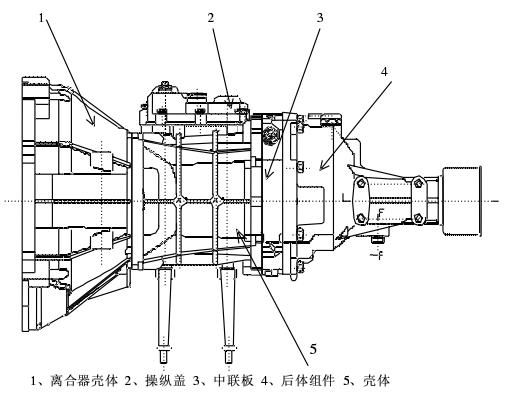The light-duty vehicle transmission housing is a three-piece housing of a clutch housing, a rear body assembly, and a control cover. The main function of the clutch housing is to realize the effective connection between the transmission and the engine. It is one of the three main housing parts in the modular design of the transmission. Through its changes, the same transmission can be equipped with different types of engines to meet the needs of various models. Therefore, the clutch housing of the same basic transmission and the transmission connecting surface (hereinafter referred to as the small surface) are all the same except that they are different from the engine connecting end (hereinafter referred to as a large surface), but have the same functional holes. Since the two sides of the clutch housing have a large area, the deformation amount during die casting is difficult to control. Therefore, the bolt through holes of the two faces must be processed, and the machining precision can be ensured by drilling, but due to the large number of holes, Different production batches correspond to different processing methods; pinhole processing generally uses drilling, boring, reaming or drilling, boring, and the processing equipment is usually a special plane or machining center, so the clutch housing has the basis for group processing. The rear body assembly is composed of a rear body and a bushing, and some have bearing positions for carrying the output shaft; there is a shifting shaft hole, and a remotely operated operating mechanism is generally disposed in the rear body; there is an odometer hole; and a rear body oil seal is used. In the case of a sealed transmission, it prevents the intrusion of external dust and prevents the leakage of lubricating oil, but it must be connected to the transmission housing regardless of its complexity. Therefore, each series of rear body components has the same connection surface and connection and positioning holes. Although the odometer hole has different positions, the processing method is the same because of the same precision. Similarly, the bushing hole, the oil seal hole, and the outer circumference of the dust cover are different in size, but they do not affect the processing method. The control cover is the support for the transmission to mount the shift lever, which has the largest difference in shape. Next page 
Light vehicle transmission case parts type and process characteristics (Figure)
